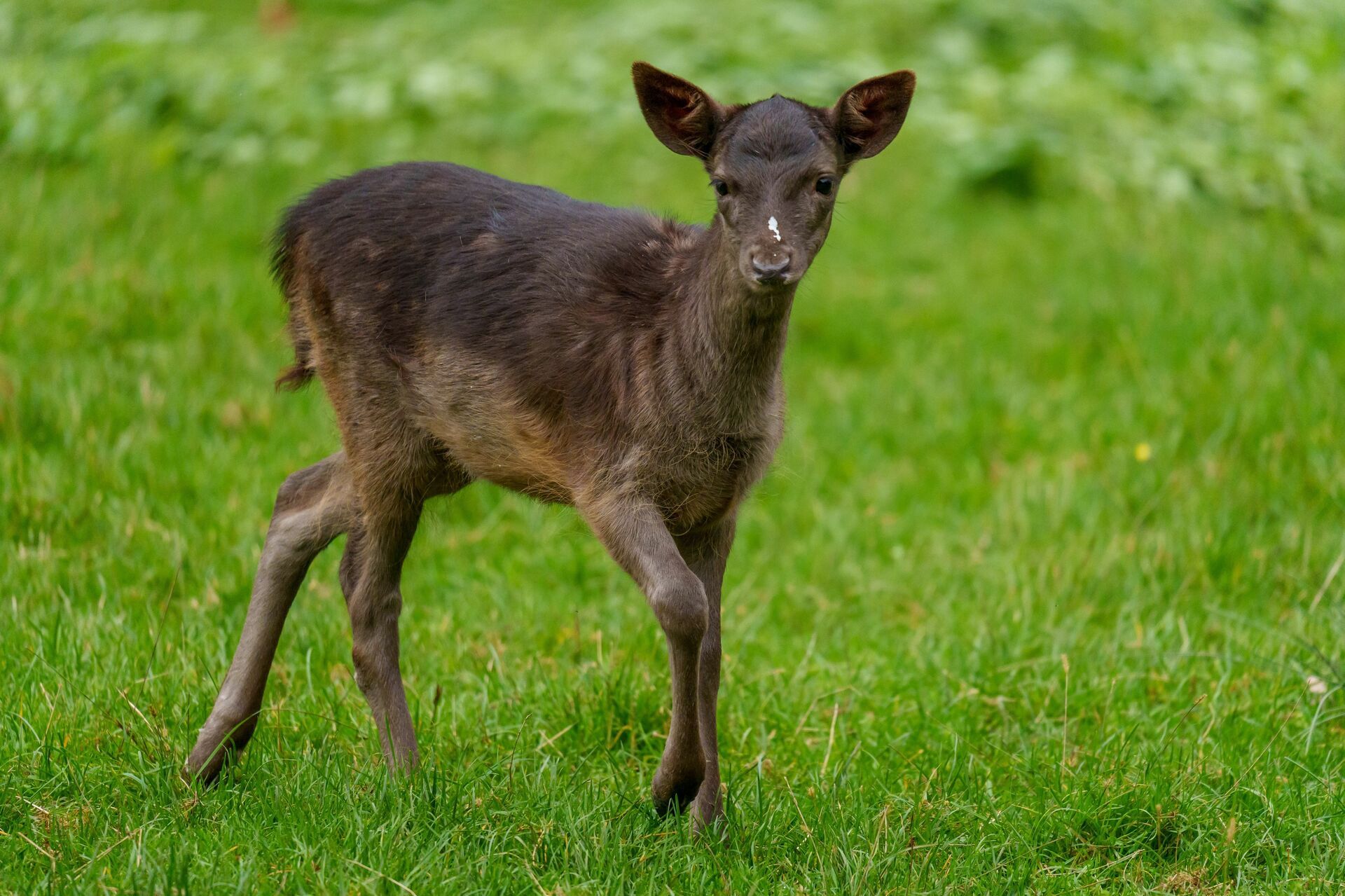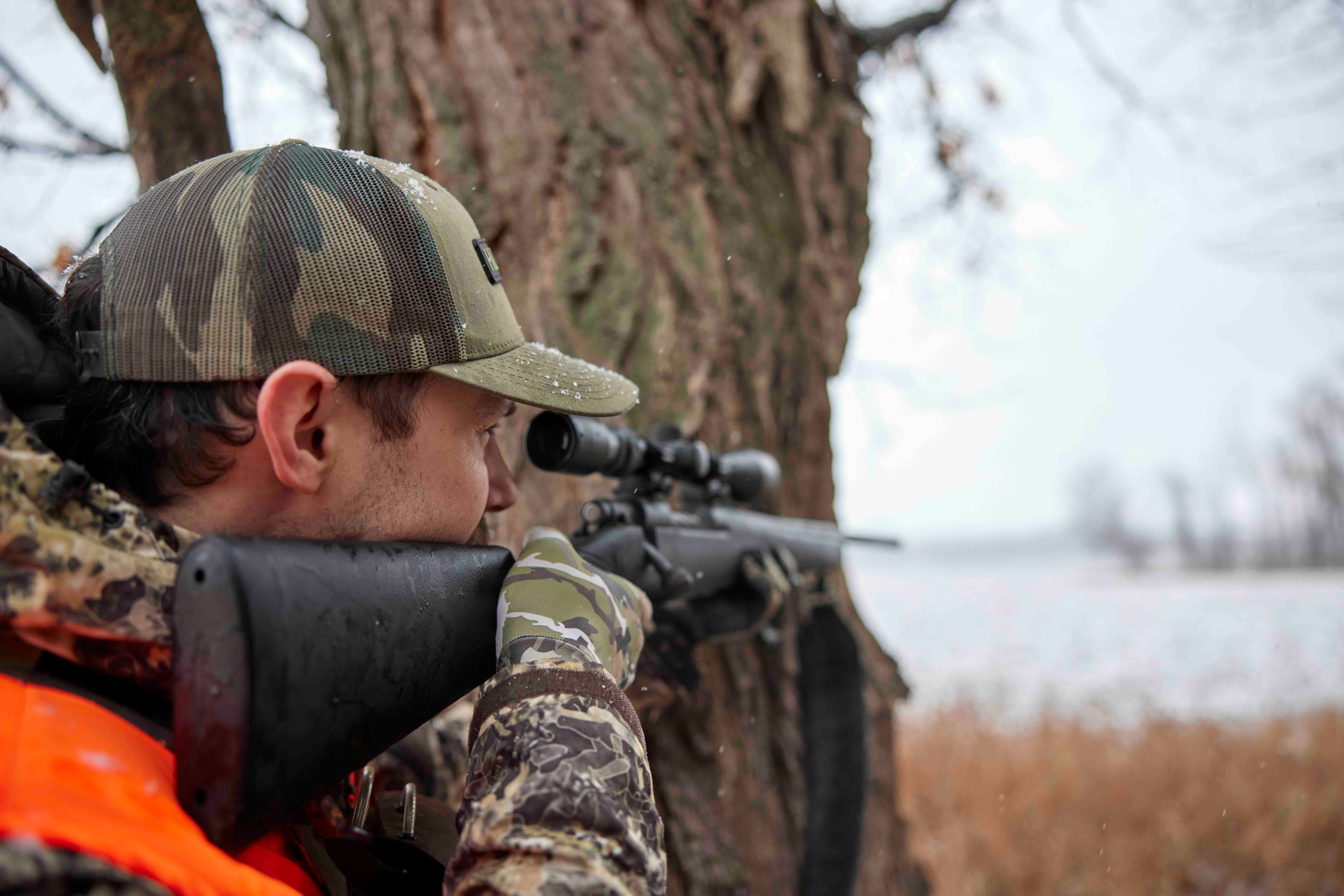These whitetail deer, known as melanistic deer, are a marvel to both deer hunters and naturalists, sparking a sense of awe and curiosity across the nation.
To better understand their rarity, we’re exploring the science behind their coloration and offering some strategies for spotting one of these stunning creatures. Keep reading to learn all about black deer.

What Is Melanism?
Melanism refers to the dark coloration of several animal species due to an inherited recessive genetic trait. This coloration can occur in the skin, fur, or feathers and is believed to be due to a mutation in the melanocortin 1 receptor gene.
This coloration can be relatively uniform and will give the deer a dark brown or black appearance across its entire body.
Similarly, genetic differences, such as albinism and leucism, which result in a lack of pigmentation, can cause white deer. Unlike melanism, albinism and leucism can contribute to other visible health defects, such as shorter legs.
How Rare Are Black Deer?
Black deer, characterized by their dark fur, are scarce, with some estimates suggesting they make up less than 1% of the deer population.
While Melanistic whitetails have been spotted in various states, central Texas, specifically Edwards Plateau and Hill Country, boasts the highest number of black deer. This intriguing fact has sparked speculation about whether an adaptability component to this trait is crucial for survival, a mystery researchers have yet to unravel.
Why Are They So Rare?
Several factors contribute to the overall rarity of black deer, including:
- Genetic factors: As the mutation is recessive, parents must carry the gene for it to be passed onto offspring. This reduces the likelihood of a melanistic deer being born – so if you see one, you should feel extremely lucky.
- Survival: The deer’s coloration can make them stand out more in other environments, making them more vulnerable to potential predators.
- Adaptation: Conversely, in darker, thick environments with high levels of coverage or near deep drainage, they benefit from stronger camouflage, making them even harder to spot.
If you spot one of these deer, take a moment to soak in the moment and realize you’re seeing something many hunters will never see.
To Hunt or Not to Hunt Black Deer
So, should you shoot one if you see one? Consider a few things before pulling the trigger or letting your arrow fly at a black deer.
Taking a Trophy
For many hunters, hunting and taking a black deer is a unique trophy representing an encounter with one of the rarest anomalies.
Regarding physiology, there is no difference between melanistic and regular whitetails other than the coloration pattern, and the meat is safe to be harvested.
So, if you plan on taking one, it will be for a stunning wall mount and bragging rights over your hunting buddies.
Ethical Considerations
Given their rarity, many hunters and conservationists may choose not to hunt black deer, opting to appreciate these unique creatures in their natural habitat instead. Even a sighting can be a once-in-a-lifetime experience, fostering a sense of responsibility and consideration for these rare animals.
Additionally, hunters may consider that by sparing a melanistic deer, they are preserving and propagating the continued breeding of this rare deer. However, there is little evidence to support this claim.
Regulations and Best Practices
Always check local regulations regarding deer hunting in your chosen zone. However, due to their rare status, there are no specific rules or restrictions regarding hunting melanistic deer.
There are, however, restrictions regarding the hunting of albino deer.
For insights on “to shoot or not to shoot,” it’s best to ask for local opinions regarding hunting black deer in your intended area. Some black deer have become legends in regional areas, taking on an almost mascot-like role in the communities they’ve been spotted in.

How To Spot Black Deer (Or At Least Enhance Your Chances)
Besides the excess dark pigmentation, black deer exhibit the same behaviors and grouping as regular deer. Strategies like e-scouting high-potential zones, glassing, and investing in a solid pair of binoculars are all great ways to get started.
Here are some additional tips to help you on your hunt for the stunning black deer.
Location Matters
Statistically, you’re much more likely to spot a black deer in the central regions of Texas, which are Blanco, Burnet, Caldwell, Comal, Guadalupe, Hays, Travis, and Williamson.
These counties are home to the highest known rate of melanistic deer in the Country. So, if seeing a black deer is on your list of things to do, plan a trip to these places in Texas and hope for the best.
Time and Patience
Just like hunting any deer, the more time spent in the field and burning boot leather, the higher the likelihood of spotting a melanistic deer. Make sure you’re out during high activity periods at dawn and dusk to boost your chances of a sighting even further.
Leverage Trail Cameras and Technology
Strategically placed trail cameras can showcase deer movement and monitor activity in your area. This can help you identify melanistic deer patterns and establish a plan to spot one in its natural habitat.
Reach Out to Private Landowners
Private ranchers and landowners may have melanistic deer on their property, and it can be worthwhile to reach out or gain local knowledge about the presence of black deer.
With the HuntWise mapping feature, you can explore public and private land boundaries and even access contact information for private landowners to request hunting permission. You never know; they may have a black deer in the back garden!
Improve Your Chances of Spotting a Black Deer With HuntWise This Season
Spotting a black deer is an extraordinary event. They’re a testament to the diversity and wonder of the natural environment and world we live in.
Mapping, e-scouting, and understanding the natural habitat are all strategies that can bring you closer to setting eyes on this rare deer.
With the HuntWise App, you’ll skyrocket your chances of spotting a black deer. If you’re a hunter, your general hunting yield will improve throughout the season with the advanced mapping features, wind and weather indicators, and rutting insights.
We hope you see that black deer this season! Download HuntWise and explore every feature – free for a week – then get out in the field.






![Air gun 101: The differences between .177 & .22 – Which jobs they do best ? [Infographic]](https://airgunmaniac.com/wp-content/uploads/2020/09/g44-218x150.jpg)








































